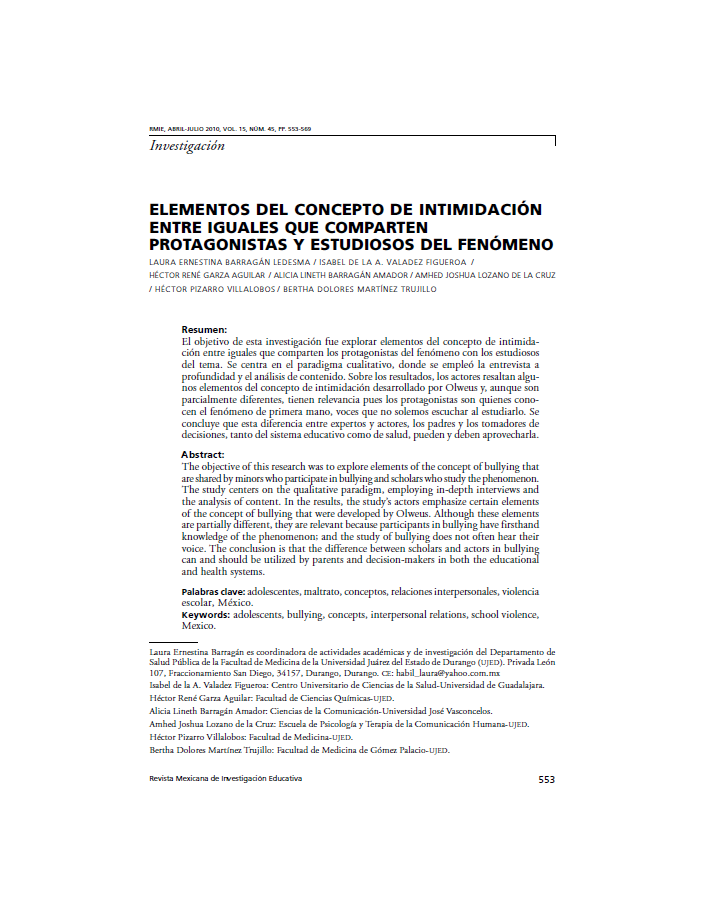Elementos del concepto de intimidación entre iguales que comparten protagonistas y estudiosos del fenómeno
Date
2010Author
Barragán Ledesma, Laura Ernestina
Valadez Figueroa, Isabel de la A.
Garza Aguilar, Héctor René
Barragán Amador, Alicia Lineth
Lozano de la Cruz, Amhed Joshua
Pizarro Villalobos, Héctor
Martínez Trujillo, Bertha Dolores
Metadata
Show full item recordAbstract
El objetivo de esta investigación fue explorar elementos del concepto de intimidación entre iguales que comparten los protagonistas del fenómeno con los estudiosos del tema. Se centra en el paradigma cualitativo, donde se empleó la entrevista a profundidad y el análisis de contenido. Sobre los resultados, los actores resaltan algunos elementos del concepto de intimidación desarrollado por Olweus y, aunque son parcialmente diferentes, tienen relevancia pues los protagonistas son quienes conocen el fenómeno de primera mano, voces que no solemos escuchar al estudiarlo. Se concluye que esta diferencia entre expertos y actores, los padres y los tomadores de decisiones, tanto del sistema educativo como de salud, pueden y deben aprovecharla.
=== === ABSTRACT === ===
The objective of this research was to explore elements of the concept of bullying that are shared by minors who participate in bullying and scholars who study the phenomenon. The study centers on the qualitative paradigm, employing in–depth interviews and the analysis of content. In the results, the study's actors emphasize certain elements of the concept of bullying that were developed by Olweus. Although these elements are partially different, they are relevant because participants in bullying have firsthand knowledge of the phenomenon; and the study of bullying does not often hear their voice. The conclusion is that the difference between scholars and actors in bullying can and should be utilized by parents and decision–makers in both the educational and health systems.

